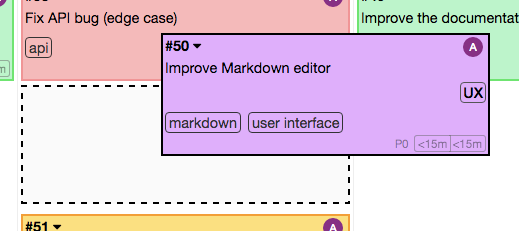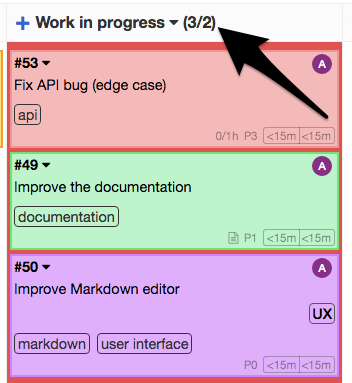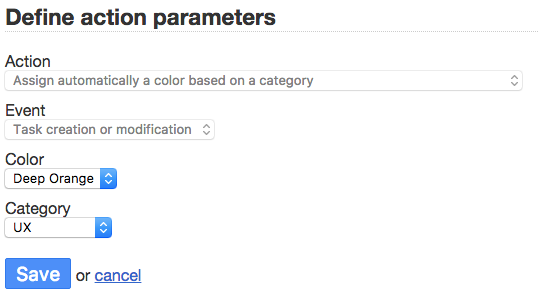Kanboard
Kanboard is a free and open source Kanban project management software.

- Visualize your work
- Limit your work in progress to focus on your goal
- Drag and drop tasks to manage your project
- Self-hosted
- Super simple installation
Features
- Simple
- There is no fancy user interface, Kanboard focuses on simplicity and minimalism. The number of features is voluntarily limited.
- Visual and clear overview of your tasks
- The Kanban board is the best way to know the current status of a project because it's visual. It's very easy to understand - there is nothing to explain and no training is required.
- Drag and drop tasks between columns easily
-

You can add, rename and remove columns at any time to adapt the board to your project.
- Limit your work in progress to be more efficient
-

Avoid multitasking to stay focused on your work. When you are over the limit, the column is highlighted.
- Search and filter tasks
-

Kanboard has a very simple query language that offers the flexibility to find tasks in no time. Dynamically apply custom filters on the board to find what you need. Search by assignees, description, categories, due date, etc.
- Tasks, subtasks, attachments and comments
-
- Break down a task into sub-tasks, estimate the time or the complexity.
- Describe your task by using Markdown syntax.
- Add comments, documents, change the color, the category, the assignee, the due date.
- Move or duplicate your tasks across projects with one click.
- Automatic actions
-

Don't repeat yourself! Automate your workflow with automated actions. Stop doing again and again the same thing manually. Change automatically the assignee, colors, categories and almost anything based on events.
- Translated in 30+ languages
- Thanks to the different contributors, Kanboard is translated in Bahasa Indonesia, Bosnian, Brazilian Portuguese, Chinese, Chinese (Taiwan), Czech, Danish, Dutch, English, Finnish, French, German, Greek, Hungarian, Italian, Japanese, Korean, Malay, Norwegian, Polish, Portuguese, Romanian, Russian, Serbian, Spanish, Swedish, Thai, Turkish, Vietnamese.
- Multiple Authentication Backends
- Connect Kanboard to your LDAP/Active Directory server or use any OAuth2 provider (Google, GitHub, GitLab...).
- Free and Open Source software
- Kanboard is distributed under the permissive MIT License. The software is mainly developed by Frédéric Guillot, but more than 334+ people have contributed!